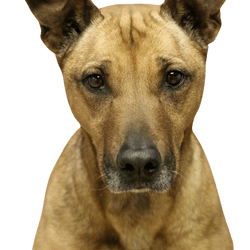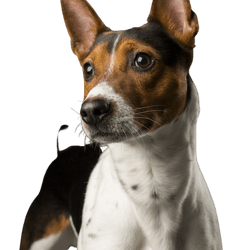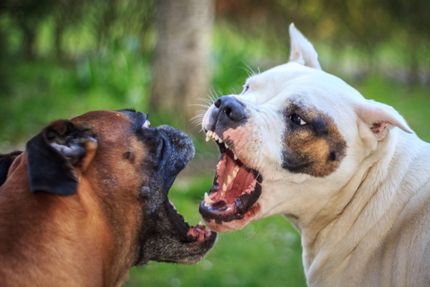
Chongqing Dog Breed description: Character & Co
Chongqing Dog
Facts & Origin
Ancestry and origin of Chongqing dogs.
The origin of this dog breed can be traced back to the Han Dynasty more than 2,000 years ago. At that time, the dogs were most common in the Chongqing area at the confluence of the Yangtze River (Yangtze for short) and the Jialing River in southwestern China. On April 20, 2,000, archaeologists found a large number of ceramic dog pottery statues resembling the Chongqing Dog in a huge Western Han Dynasty cemetery near Jiangbei in Chongqing. The breed standard cites native breeds originating from the adjacent regions of Dazhu, Hechuan, Yongchuan, Lingshui and Guanan as direct ancestors, but they are all referred to as Chongqing Dogs. Due to the increasing urbanization of these regions, the population of Chongqing Dogs declined sharply. However, the breed has been successfully bred again since the 1970s and has become a popular working dog in Chongqing and surrounding areas.
Breed characteristics and temperament
The Chongqing Dog is a Chinese dog breed not recognized by the FCI. However, FCI recognition is being sought. The breed is recognized as a national breed by the China Kennel Union (CKU), which represents China in the FCI. The Union of Cynologist of Kazakhstan (UCK), also an associate member of the FCI, has also recognized the breed and classifies it according to FCI standard in group 2 (Pinscher and Schnauzer - Molosser - Swiss Mountain Dogs).



| Alternate Name | Chinese Chongqing Dog |
| Origin | China |
| Life expectancy | 10 - 13 years |
| Care requirements | low-maintenance |
| Activity level | average |
| FCI group | not recognised |
| AKC group | not recognised |
| KC group | not recognised |
Attitude, character and temperament of the breed
The representatives of this breed are loyal, intelligent, friendly dogs of high agility and mobility. They excelled especially as guardians of home and family. In the breeding standard is specified as a use house dog, guard dog and hunting dog. Outstanding traits of these dogs are:
- Loyalty
- courage
- fearlessness
- Alertness
Attitude and education
These dogs are as alert, fearless as they are loyal. They are outgoing but independent dogs who can still form a strong bond with their humans. They are outgoing, but wary of strangers. Chongqing Dogs are considered ideal training dogs, but belong in the hands of experienced dog owners.
Character
Usage

Health and breeding information
Care and nutrition
The short and dense coat of the dogs does not require extensive care. Brushing often is enough. However, the dog needs large amounts of food with a high meat content.
Health and life expectancy
In the breed possible diseases, such as epilepsy, heart disease, prolapsus (uterine prolapse), cryptorchidism (undescended testicles) or dysplasia are bred out in the breeding lines, but are not always completely excluded due to inbreeding and mutations. Healthy dogs have a high life expectancy of up to 18 years.
Interesting facts about Chongqing Dogs
Even though it is being bred more frequently again, the Chongqing Dog is still one of the very rare dog breeds. If you want to have one of these remarkable dogs, a vacation trip to China is the fastest solution.
Conclusion: Even though the imposing stature of the dogs may give a different impression, they are not fighting dogs and are not listed dogs in Germany. Due to their coat structure, Chongqing Dogs are also well suited for people with dog hair allergies. Some dogs also have blue tongues.


Breed characteristics of the Chinese dog and its appearance
The physique of the dogs is compact and square, yet muscular and powerful. The short coat without undercoat is smooth lying. The coat colors are red (in variations light to dark) as well as black. The head of the dogs has a distinct stop, prominent cheekbones and a wrinkled forehead. It appears somewhat bulky in proportion to the rest of the body. The small thin ears stand erect and are directed forward. Characteristic of the dogs are the blackish-blue lips and blue tongue, as found in the Chow-Chow. The ideal height at the withers is 40-45 cm, for males and 35-40 cm for females. The weight is ideally between 20 to 25 kg, but is not predetermined.
| Fur length | short |
| Fur | flat coated |
| Ear shape | Standing Ears |
| Tail | short |
| Anatomy | strong |
| Size ♀ | 41 - 47 cm |
| Weight ♀ | 20 - 25 kg |
| Size ♂ | 45 - 50 cm |
| Weight ♂ | 20 - 25 kg |
| Suitable For | - |
Colors



Known Diseases
Elbow dysplasia (ED)
Elbow joint dysplasia is a chronic disease complex of the elbow joint of fast growing dog breeds.
Epilepsy
Definition: Dog has epilepsy if, for example, at least two epileptic seizures occur more than 24 hours apart.
Heart disease
Can occur frequently in dogs and can sometimes be treated with medication.
Hip dysplasia (HD)
The hip dysplasia or hip joint dysplasia of the dog (HD) is a maldevelopment of the hip joint.
Other medium dogs
Useful Articles
You can find articles that might interest you in the dogbible blog to match your favorite breed.
Visit our magazineto stay up to date on dog trends.
To find out more, view our Privacy Policy
Find here the breed that suits you and find out what character traits it has. Here you can also learn more about the origin, size and weight of your favorite breeds.
Matching your favorite breed, you'll find articles that might interest you on the dogbible dog blog.
Dog beach at the German North Sea
Dog ran away - what to do if the dog is gone?
How much does a vet visit cost for a dog?
Should Dogs Be Allowed On The Couch? - yes or no and how to break the habit
5 tips for the trick "give paw" - so you learn it to your dog






















